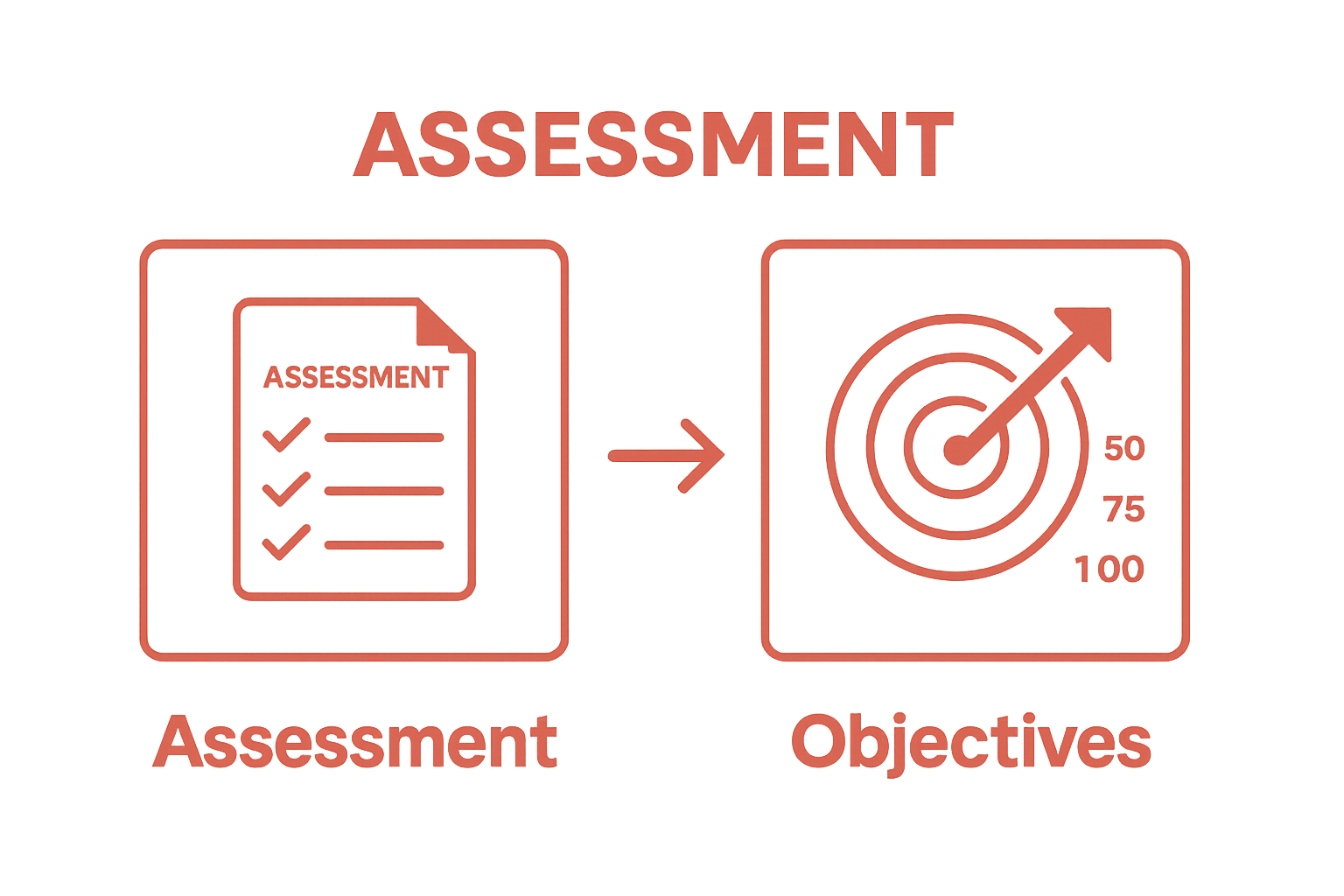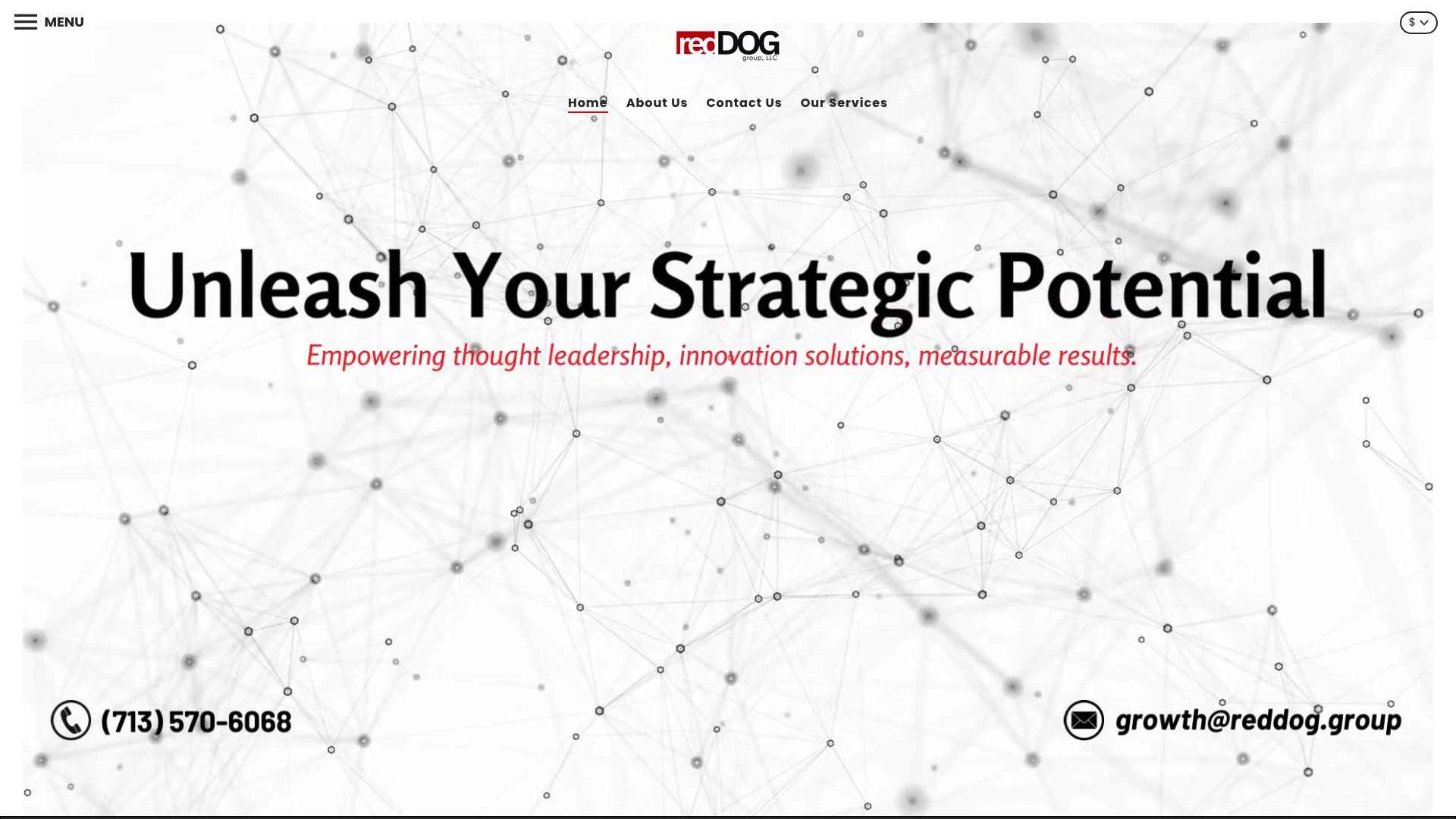
Optimize Your Retail Brand Growth Workflow Effectively
Posted on
Retail brands talk a lot about growth, but only a handful actually know the exact steps it takes to build a foundation that works. Some will obsess over flashy ad campaigns or social media trends, ignoring the one step that sets everything else in motion. Yet brands who start with a sharp self-assessment and uncover their true market standing can unlock strategies that lead to results like an 18 percent revenue jump in just six months. The science of brand growth is full of surprises, and the most effective workflows do not always follow the crowd.
Table of Contents
- Step 1: Assess Your Current Brand Position
- Step 2: Define Clear Growth Objectives
- Step 3: Identify Target Audience Segments
- Step 4: Develop A Multichannel Strategy
- Step 5: Implement Marketing And Sales Tactics
- Step 6: Evaluate And Adjust Growth Strategies
Quick Summary
| Key Point | Explanation |
|---|---|
| 1. Assess Current Brand Position | Evaluate sales, performance metrics, and market opportunities to establish a baseline for growth strategies. |
| 2. Define SMART Growth Objectives | Set Specific, Measurable, Achievable, Relevant, and Time-bound objectives that directly address performance gaps. |
| 3. Identify Target Audience Segments | Create detailed customer personas from existing data to inform targeted marketing strategies and engagement. |
| 4. Develop a Multichannel Strategy | Create tailored approaches for various customer interaction channels to ensure a seamless brand experience. |
| 5. Evaluate and Adjust Strategies Regularly | Implement performance tracking and periodic reviews to refine strategies based on real-time market feedback. |
Step 1: Assess Your Current Brand Position
Assessing your current brand position is the foundational step in developing an effective retail brand growth workflow. This critical initial phase provides a comprehensive snapshot of your existing market standing, performance metrics, and strategic opportunities. By conducting a thorough evaluation, you establish a clear baseline from which all future growth strategies will emerge.
Start by gathering critical data points across multiple dimensions of your business. Analyze your current sales performance, revenue streams, customer demographics, and market penetration. Look beyond surface level numbers and dig deep into the underlying patterns. Examine your total revenue, average transaction value, customer acquisition costs, and repeat purchase rates. These metrics offer invaluable insights into your brand’s current health and potential growth trajectories.
Next, conduct a comprehensive competitive analysis to understand your unique positioning. Map out your direct and indirect competitors, examining their strengths, weaknesses, pricing strategies, and market share. Learn more about developing a strategic retail perspective to refine your understanding. Pay special attention to how your brand differentiates itself. Are you competing on price, quality, customer experience, or innovative product offerings? Understanding these nuanced differentiators will help you craft a more targeted growth strategy.
To verify you have successfully completed this assessment, ensure you have compiled a comprehensive report that includes:
- Detailed financial performance metrics
- Competitive landscape analysis
- Customer segmentation breakdown
- Current market positioning overview
Remember, this initial step sets the groundwork for your entire retail brand growth workflow. The more precise and honest your assessment, the more effective your subsequent strategic planning will become.
Step 2: Define Clear Growth Objectives
Defining clear growth objectives transforms your retail brand strategy from abstract aspirations to concrete, actionable plans. This critical step translates the insights gathered during your initial assessment into precise, measurable targets that will drive your brand forward. Learn more about strategic growth planning to enhance your approach.
Begin by establishing SMART objectives specific to your retail brand. These objectives must be Specific, Measurable, Achievable, Relevant, and Time-bound. Instead of vague goals like “increase sales,” articulate precise targets such as “increase quarterly revenue by 18% within the next six months by expanding our online marketplace presence and optimizing product listings.” Your objectives should directly address the performance gaps and opportunities uncovered in your initial brand assessment.
Consider multiple dimensions of growth beyond simple revenue expansion. Develop objectives around customer acquisition, market penetration, product diversification, operational efficiency, and brand reputation. For instance, you might set objectives to reduce customer acquisition costs by 22%, improve customer retention rates by 15%, or launch two new product lines that complement your existing portfolio. Each objective should have clear key performance indicators that allow you to track progress systematically.
To verify successful completion of this step, ensure your growth objectives meet the following criteria:
- Directly linked to your initial brand assessment findings
- Quantifiable with specific numeric targets
- Time-bound with clear deadline expectations
- Aligned with your overall business strategy
- Supported by realistic implementation plans
Remember that growth objectives are not set in stone.
 They should remain flexible enough to adapt to changing market conditions while maintaining a clear strategic direction for your retail brand.
They should remain flexible enough to adapt to changing market conditions while maintaining a clear strategic direction for your retail brand.
Step 3: Identify Target Audience Segments
Identifying target audience segments is a crucial strategic process that transforms broad market understanding into precise, actionable customer insights. This step moves beyond generic demographic data to create nuanced profiles that reveal the deeper motivations, behaviors, and preferences driving your potential customers. Understand the strategic importance of customer segmentation to refine your approach.
Begin by analyzing your existing customer data comprehensively. Examine purchase histories, engagement patterns, geographic locations, and interaction touchpoints across all your sales channels. Look for distinctive characteristics that distinguish different customer groups. These might include spending habits, product preferences, lifestyle factors, or specific pain points your brand addresses. According to research on market segmentation, detailed customer profiling allows businesses to create more targeted and effective marketing strategies.
Construct detailed customer personas that go beyond simple demographics. Each persona should represent a distinct segment of your potential market, complete with behavioral insights, potential barriers to purchase, and unique value propositions. For instance, a tech-savvy young professional might require different communication and product positioning compared to a budget-conscious family shopper. Pay attention to both explicit behaviors and underlying motivations that drive purchasing decisions.
To verify you have successfully completed this audience segmentation step, ensure you have developed a comprehensive profile that includes:
- Detailed customer persona descriptions
- Specific behavioral and demographic characteristics
- Unique value propositions for each segment
- Potential marketing and communication strategies
Remember that audience segmentation is not a one-time exercise but an ongoing process. Markets evolve, and so do customer preferences. Regularly revisit and refine your audience segments to maintain the relevance and effectiveness of your retail brand growth workflow.
Step 4: Develop a Multichannel Strategy
Developing a multichannel strategy transforms how your retail brand connects with customers across various platforms and touchpoints. This critical step integrates your understanding of target audience segments into a comprehensive approach that maximizes market reach and engagement. Learn more about advanced omnichannel strategies to refine your approach.
Begin by mapping out all potential customer interaction channels, including digital platforms, physical retail spaces, social media, marketplaces, and direct sales channels. Each channel requires a tailored approach that maintains consistent brand messaging while adapting to the specific communication style and customer expectations of that platform. Consider the unique strengths of each channel. For example, your Instagram presence might focus on visual storytelling and product discovery, while your physical store emphasizes personalized customer experience and immediate product interaction.
Carefully design your channel integration strategy to create a seamless customer journey. This means ensuring that customers can move effortlessly between online and offline touchpoints without friction. Implement technologies and processes that support real-time inventory tracking, consistent pricing, and unified customer data across all channels. Consider developing capabilities like buy-online-pickup-in-store, mobile app integration with physical retail experiences, and synchronized customer service across digital platforms. The goal is to create a fluid, interconnected brand experience that meets customers wherever they prefer to engage.

To verify successful multichannel strategy development, ensure you have established:
- Consistent brand messaging across all channels
- Integrated customer data and tracking systems
- Channel-specific engagement strategies
- Unified customer service protocols
Remember that a successful multichannel strategy is dynamic. Continuously monitor performance, gather customer feedback, and be prepared to adapt your approach as market conditions and customer preferences evolve.
Step 5: Implement Marketing and Sales Tactics
Implementing marketing and sales tactics transforms your strategic planning into tangible actions that drive brand growth and customer acquisition. This step bridges the gap between your carefully defined objectives and real-world market engagement. Explore strategic workflow optimization techniques to enhance your approach.
Craft a comprehensive marketing strategy that aligns precisely with the target audience segments identified earlier. Develop customized messaging that speaks directly to each customer persona, utilizing a mix of digital and traditional marketing channels. This means creating targeted social media campaigns, developing email marketing sequences, producing content that addresses specific customer pain points, and designing promotional offers that resonate with each audience segment. Focus on creating compelling narratives that highlight your brand’s unique value proposition across all communication platforms.
Simultaneously, design sales tactics that complement your marketing efforts. This involves training your sales team to understand the nuanced customer personas, implementing robust customer relationship management systems, and creating streamlined sales processes that make purchasing effortless. According to market research best practices, successful sales strategies require a deep understanding of customer motivations and seamless conversion pathways. Integrate tools that track customer interactions, provide personalized recommendations, and support multiple purchase options across your various sales channels.
To verify successful implementation of marketing and sales tactics, ensure you have established:
- Targeted marketing campaigns for each customer segment
- Consistent messaging across all marketing channels
- Clear sales conversion metrics and tracking systems
- Comprehensive customer journey mapping
Remember that marketing and sales tactics are not static. Continuously monitor performance, gather customer feedback, and be prepared to pivot your approach based on real-world results and emerging market trends.
Step 6: Evaluate and Adjust Growth Strategies
Evaluating and adjusting growth strategies is the critical final step that transforms your retail brand workflow from a static plan into a dynamic, responsive system of continuous improvement. This phase is about creating a feedback loop that allows your brand to remain agile and competitive in a rapidly changing market environment. Explore advanced growth consulting insights to refine your strategic approach.
Implement a comprehensive performance tracking system that captures detailed metrics across all aspects of your retail brand strategy. This goes beyond surface-level revenue numbers, diving deep into key performance indicators that reveal the nuanced health of your business. Analyze conversion rates, customer acquisition costs, retention metrics, channel-specific performance, and the effectiveness of marketing and sales tactics. Use advanced analytics tools that provide real-time insights and allow for granular examination of your brand’s performance across different customer segments and sales channels.
Develop a structured approach to strategy adjustment that is both systematic and flexible. Create quarterly review sessions where you critically examine your performance data, comparing actual results against the original growth objectives. Identify areas of overperformance and underperformance, understanding the underlying factors driving these results. This is not about assigning blame but about gaining actionable insights. Look for patterns in customer behavior, emerging market trends, and internal operational efficiencies that can inform strategic pivots. Be prepared to make bold adjustments, whether that means reallocating resources, refining target audience segments, or completely redesigning marketing approaches.
To verify successful evaluation and strategy adjustment, ensure you have:
- Comprehensive performance tracking documentation
- Detailed analysis of strategic objective achievements
- Clear action plans for identified improvement areas
- Established regular review and adjustment mechanisms
Remember that strategy evaluation is an ongoing process. The most successful retail brands view their growth workflow as a living, breathing system that continuously learns, adapts, and evolves in response to market dynamics.
Below is a checklist table summarizing the verification criteria for successful completion of each major workflow step, allowing you to quickly confirm your progress for every stage.
| Workflow Step | Completion Checklist |
|---|---|
| Assess Brand Position | Compiled report with financial metrics, competitive analysis, customer segmentation, and market positioning overview |
| Define Growth Objectives | Objectives are SMART, quantifiable, time-bound, aligned with business strategy, and linked to brand assessment findings |
| Identify Target Audience Segments | Comprehensive customer personas, behavioral and demographic details, value props, and marketing strategies for each segment developed |
| Develop Multichannel Strategy | Consistent messaging, integrated data and tracking, channel-specific engagement, and unified service protocols established |
| Implement Marketing and Sales Tactics | Targeted campaigns, consistent messaging, sales conversion tracking, and full customer journey mapping implemented |
| Evaluate and Adjust Growth Strategies | Comprehensive tracking, performance analysis, action plans, and regular review mechanisms established |
Ready to Unlock Predictable Retail Brand Growth?
Are you struggling to turn your brand insights into tangible, measurable results? If your team is overwhelmed by shifting market trends, disconnected sales channels, or unclear growth strategies, you are not alone. The steps outlined in this article—like assessing your brand position, defining SMART objectives, and building a multichannel approach—require deep expertise and ongoing adaptation. Many brands find themselves stuck at the planning stage, losing time and missing out on sustainable revenue gains.
Explore Digital & Business Consulting Services tailored for small and medium businesses just like yours. Our hands-on support goes far beyond advice. Reddog Group helps you set up integrated tracking, streamline your omnichannel workflow, and achieve the brand growth targets outlined in your workflow—fast and efficiently.

Stop letting goals go unmet. Visit Reddog Group’s main site to see real case studies and client testimonials. Partner with a proven agency that has scaled over 50 brands using actionable strategy and data-driven solutions. Put your growth plan into action today by requesting a discovery call or visiting our home page to start your transformation now.
Frequently Asked Questions
What is the first step in optimizing my retail brand growth workflow?
Assessing your current brand position is the foundational step that provides insights into your market standing, performance metrics, and strategic opportunities.
How can I define clear growth objectives for my retail brand?
Define SMART objectives—Specific, Measurable, Achievable, Relevant, and Time-bound—to translate your brand assessment insights into actionable growth plans.
Why is identifying target audience segments important for my retail brand?
Identifying target audience segments allows you to create nuanced customer profiles that reveal motivations and behaviors, helping to inform targeted marketing strategies.
How can I evaluate and adjust my growth strategies effectively?
Implement a comprehensive performance tracking system that captures detailed metrics. Regularly review and analyze this data to identify areas for improvement and make necessary adjustments.
Leave a comment: